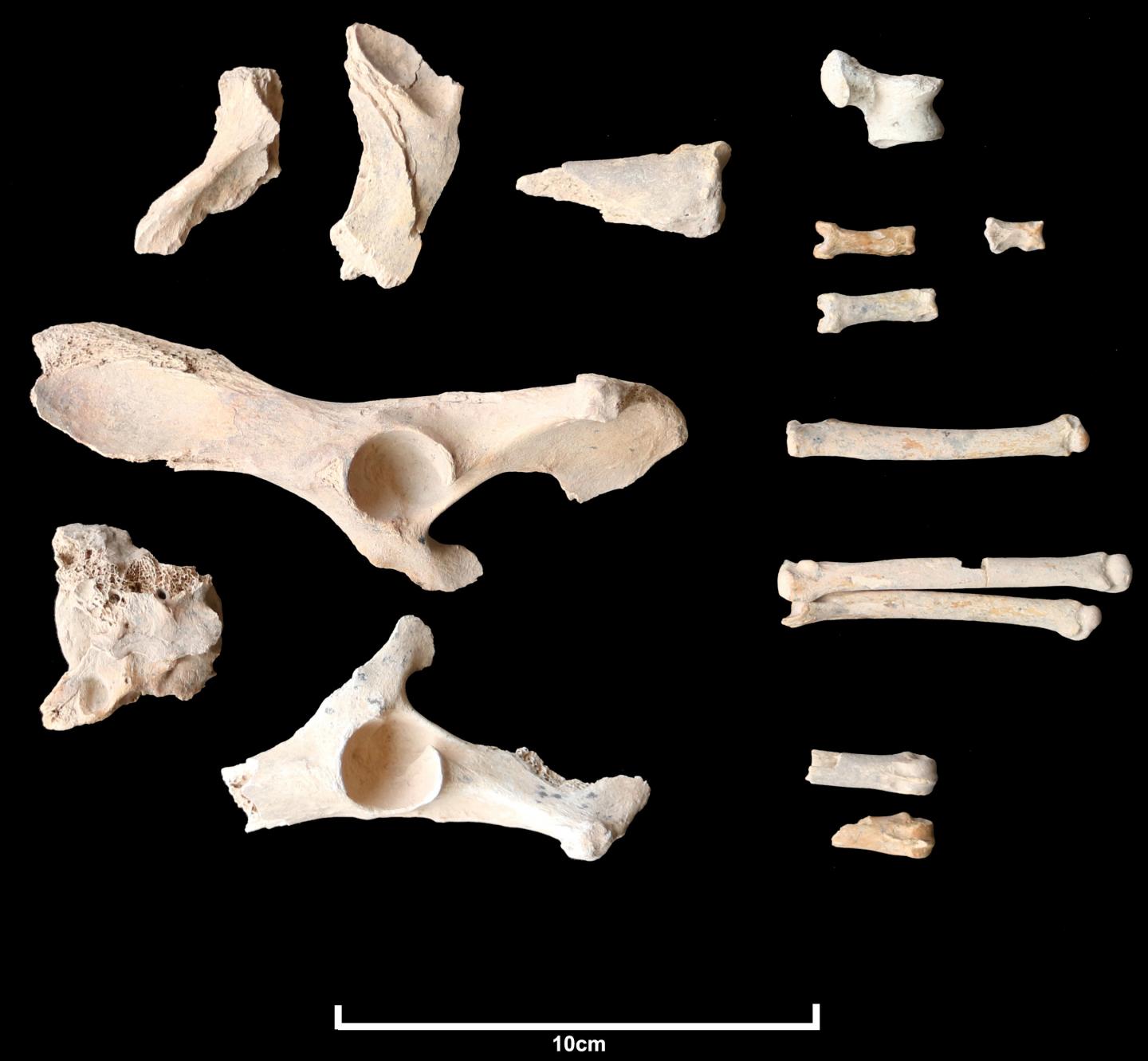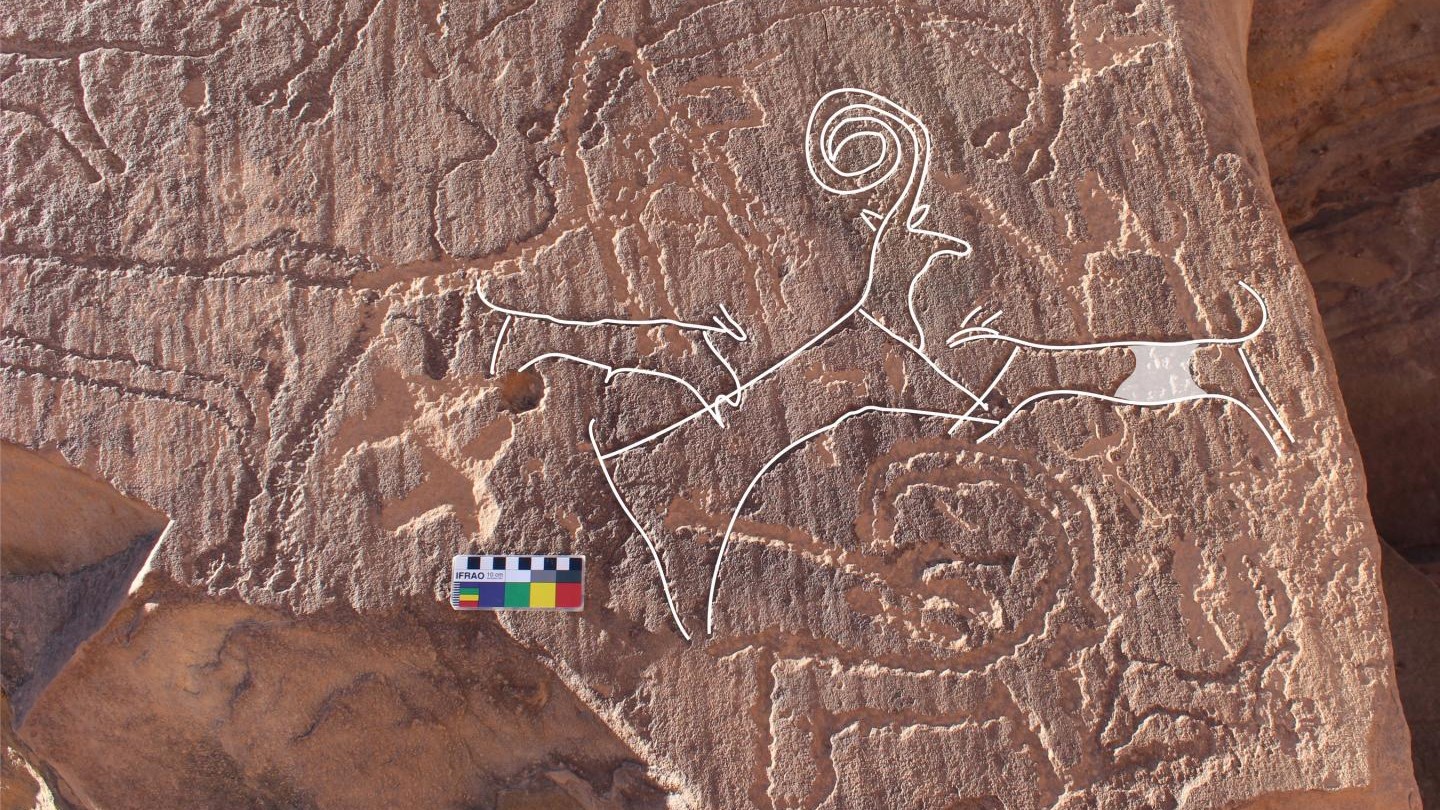Pet dog buried 6,000 years ago is earliest evidence of its domestication in Arabia
It pushes back previous estimates by around 1,000 years.

Archaeologists have discovered 6,000-year-old bones from a pet dog alongside the human remains of its owners at a burial site in Saudi Arabia. The remains may be the earliest example of dog domestication in the region, dating to around 1,000 years earlier than previous finds.
The team of international researchers unearthed the dog bones in 2018 after locating the burial site in satellite imagery, as part of a large-scale archaeological survey by the Royal Commission for AlUla (RCU) — a Saudi archaeology program dedicated to preserving and developing historical sites in the Arabain Peninsula.
The ancient tomb where the remains were found is one of the oldest in the region, dating back to about 4300 B.C. The tomb had been used by many generations over a period of around 600 years during the Neolithic-Chalcolithic era. It was also built above ground, which was unusual for the time because it would be easily seen by grave robbers, according to the researchers.
They found 26 bone fragments from a single dog that were buried with the remains of at least 11 humans, including six adults, four children and one adolescent. The dog bones were too small to belong to a desert wolf — a much larger, wild canine species that was prevalent at the time. The bones also showed signs of arthritis, which suggests that the dog was middle- to late-age and was likely domesticated because most wild dogs wouldn't have lived this long.
Related: 7 surprising health benefits of dog ownership
"Humans love dogs, and the fact that we have evidence of one being buried with humans suggests that not only were these animals useful, but there may have been an emotional bond between animal and owner," lead author Hugh Thomas, an archaeologist at the University of Western Australia in Perth, told Live Science. "Despite the fact that we have progressed so much technologically, the role and importance of dogs for humankind has not changed."

The oldest known physical evidence of dog domestication in the world was discovered in a grave in Oberkassel, a suburb of Bonn in western Germany; those dog remains were dated to around 14,000 years ago, Live Science previously reported.
Sign up for the Live Science daily newsletter now
Get the world’s most fascinating discoveries delivered straight to your inbox.
Helpful hunters
"We know that dogs played a very important role in the life of the early hunters and herders of northwest Arabia," Thomas said.
The main evidence of this comes from rock art discovered in other parts of the Arabain Peninsula that depicts humans hunting animals such as ibex with the help of dogs.

"Large, often leashed, packs of dogs can be seen helping humans, much like modern sheep dogs," Thomas said. "As such, they would have provided invaluable help and support for the ancient inhabitants of the region."
The dog bones date back to the fifth millennium B.C., but some of the rock art dates back as far as the seventh or eighth millennium B.C.. These dates suggests dogs had likely already been domesticated for several thousand years in the region.
"What we have identified is the first physical evidence of this important relationship," Thomas said. "As more work is done in Arabia, we would expect to find more examples and most probably earlier ones."
The study was published online April 8 in the Journal of Field Archaeology.
Originally published on Live Science.

Harry is a U.K.-based senior staff writer at Live Science. He studied marine biology at the University of Exeter before training to become a journalist. He covers a wide range of topics including space exploration, planetary science, space weather, climate change, animal behavior and paleontology. His recent work on the solar maximum won "best space submission" at the 2024 Aerospace Media Awards and was shortlisted in the "top scoop" category at the NCTJ Awards for Excellence in 2023. He also writes Live Science's weekly Earth from space series.









